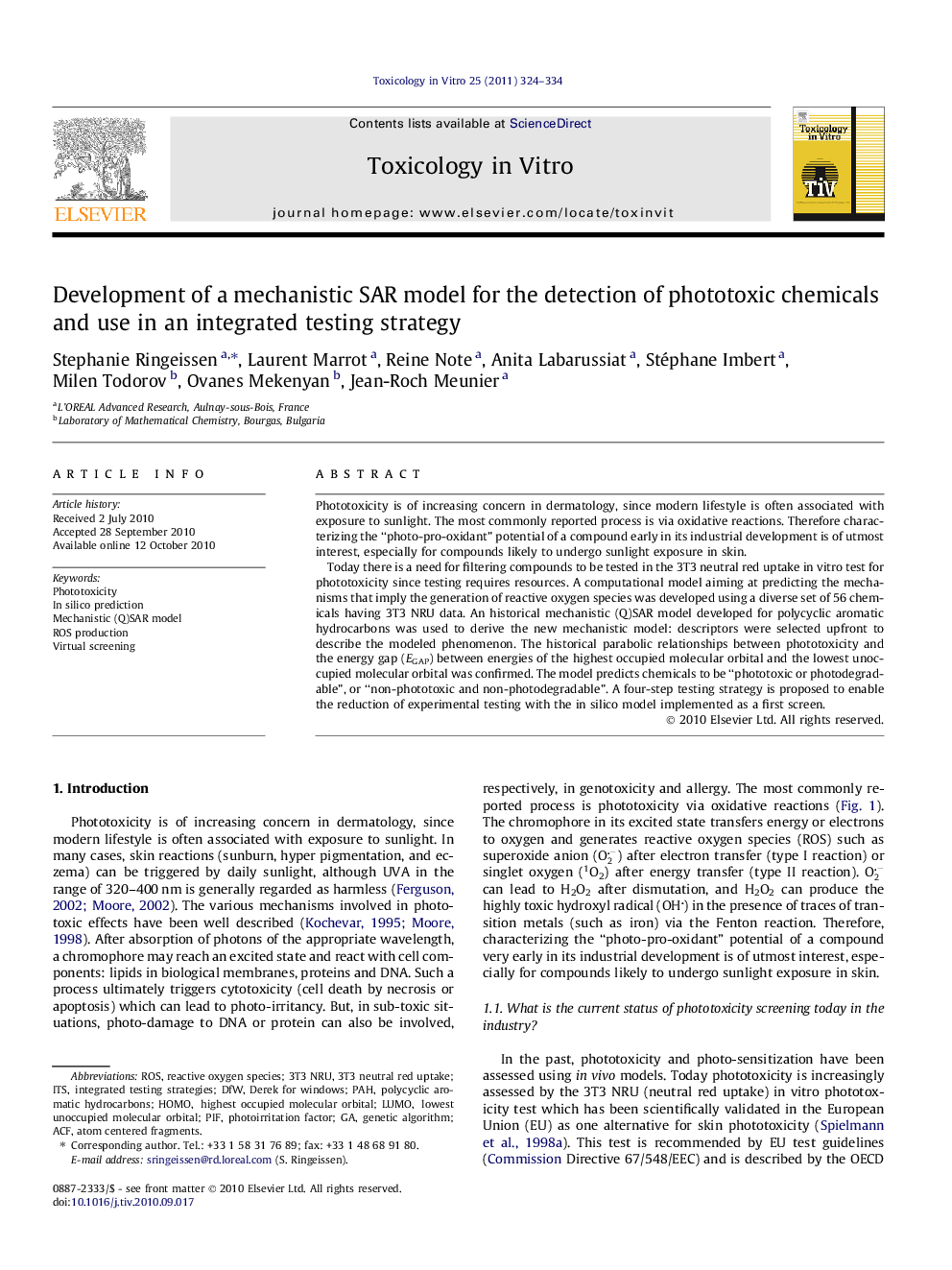| Article ID | Journal | Published Year | Pages | File Type |
|---|---|---|---|---|
| 2602905 | Toxicology in Vitro | 2011 | 11 Pages |
Phototoxicity is of increasing concern in dermatology, since modern lifestyle is often associated with exposure to sunlight. The most commonly reported process is via oxidative reactions. Therefore characterizing the “photo-pro-oxidant” potential of a compound early in its industrial development is of utmost interest, especially for compounds likely to undergo sunlight exposure in skin.Today there is a need for filtering compounds to be tested in the 3T3 neutral red uptake in vitro test for phototoxicity since testing requires resources. A computational model aiming at predicting the mechanisms that imply the generation of reactive oxygen species was developed using a diverse set of 56 chemicals having 3T3 NRU data. An historical mechanistic (Q)SAR model developed for polycyclic aromatic hydrocarbons was used to derive the new mechanistic model: descriptors were selected upfront to describe the modeled phenomenon. The historical parabolic relationships between phototoxicity and the energy gap (EGAP) between energies of the highest occupied molecular orbital and the lowest unoccupied molecular orbital was confirmed. The model predicts chemicals to be “phototoxic or photodegradable”, or “non-phototoxic and non-photodegradable”. A four-step testing strategy is proposed to enable the reduction of experimental testing with the in silico model implemented as a first screen.
